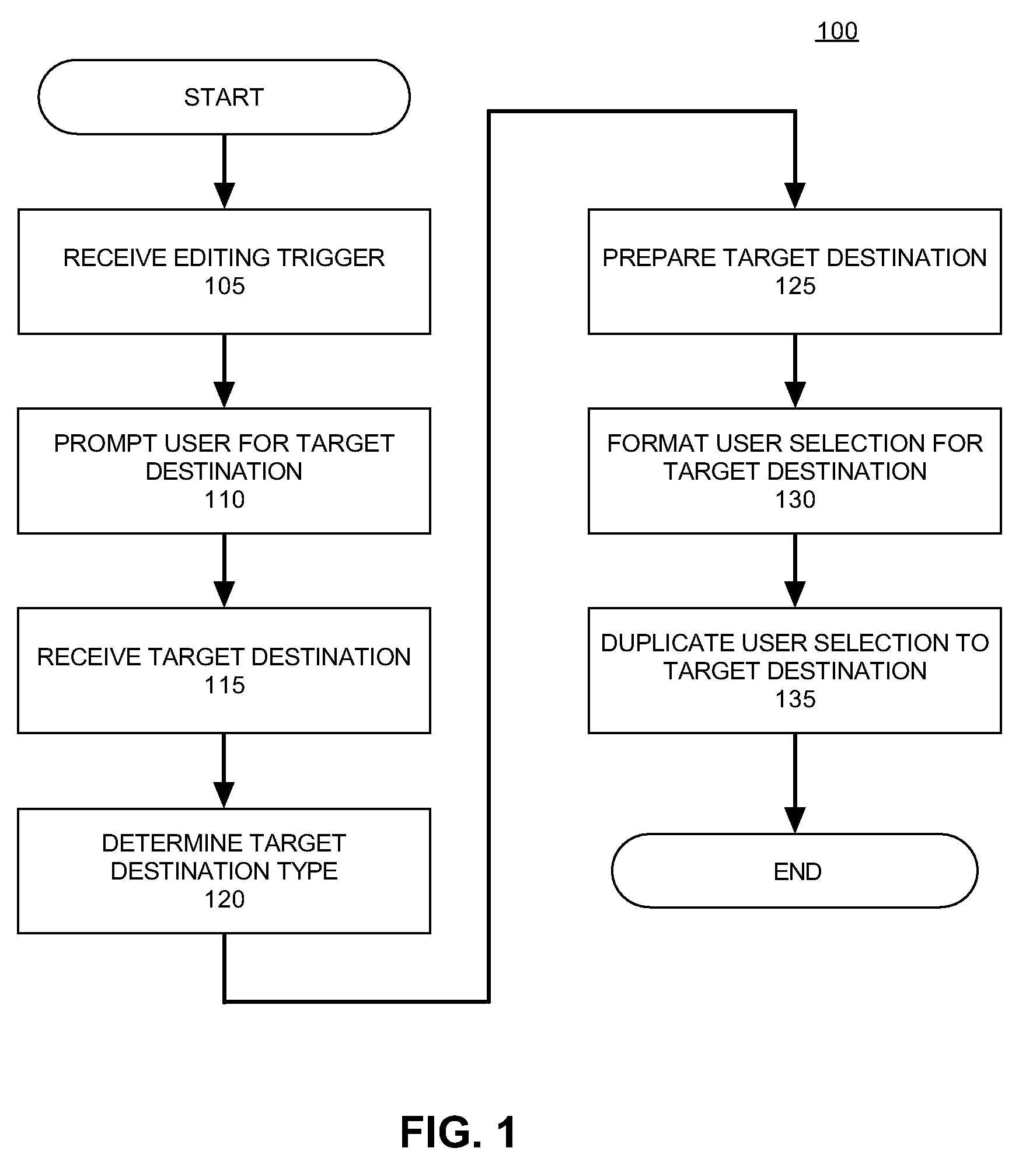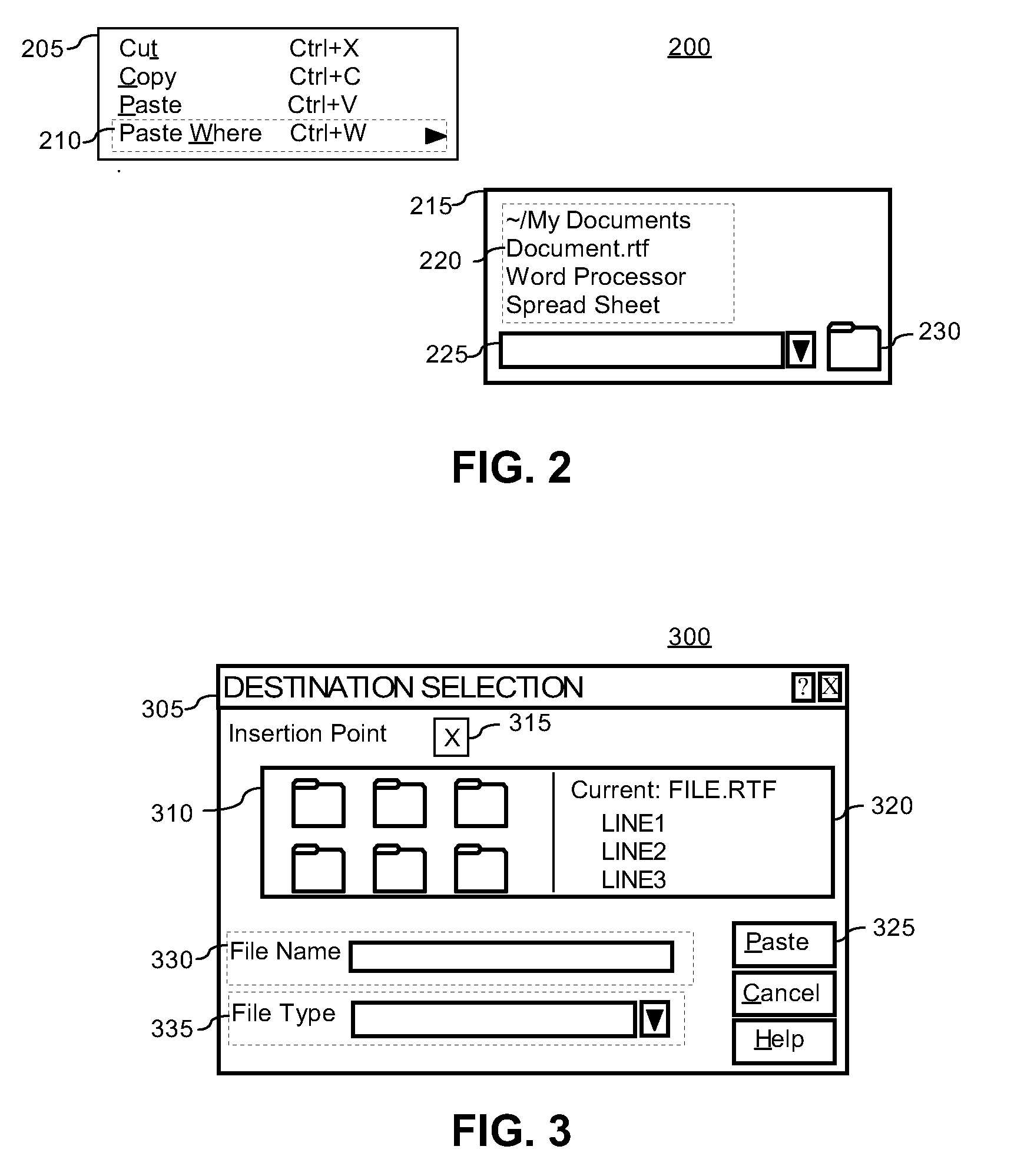Facilitated source to target object editing functions
a source and target object technology, applied in the field of computer software, can solve the problems of system performance degradation, unacceptably disrupted system performance, and tedious utilization of editing functions employed within the graphic user interface (gui), so as to simplify the editing duplication operation, save hardware resources, and simplify the effect of user selection
- Summary
- Abstract
- Description
- Claims
- Application Information
AI Technical Summary
Benefits of technology
Problems solved by technology
Method used
Image
Examples
Embodiment Construction
[0020] The invention disclosed herein provides a method for facilitating the source to target step of a graphic user interface (GUI) edit. Specifically, the invention can enhance existing cut-copy-paste functions to include a destination targeting mechanism, which can be referred to as a “paste where” function. The method can provide a means for target destination selection that allows a user to duplicate selections made within an application with fewer steps than conventional editing functions. Additionally, the method can conserve hardware resources by requiring fewer applications to be simultaneously accessed or “opened” and by minimizing temporary storage requirements, such as clipboard memory space.
[0021]FIG. 1 is a flow chart illustrating a method 100 for editing software objects according to the present invention. The method 100 can be performed in the context of interactive editing within a GUI. Method 100 begins in a state where a user has already made a selection using an...
PUM
 Login to View More
Login to View More Abstract
Description
Claims
Application Information
 Login to View More
Login to View More - R&D
- Intellectual Property
- Life Sciences
- Materials
- Tech Scout
- Unparalleled Data Quality
- Higher Quality Content
- 60% Fewer Hallucinations
Browse by: Latest US Patents, China's latest patents, Technical Efficacy Thesaurus, Application Domain, Technology Topic, Popular Technical Reports.
© 2025 PatSnap. All rights reserved.Legal|Privacy policy|Modern Slavery Act Transparency Statement|Sitemap|About US| Contact US: help@patsnap.com



